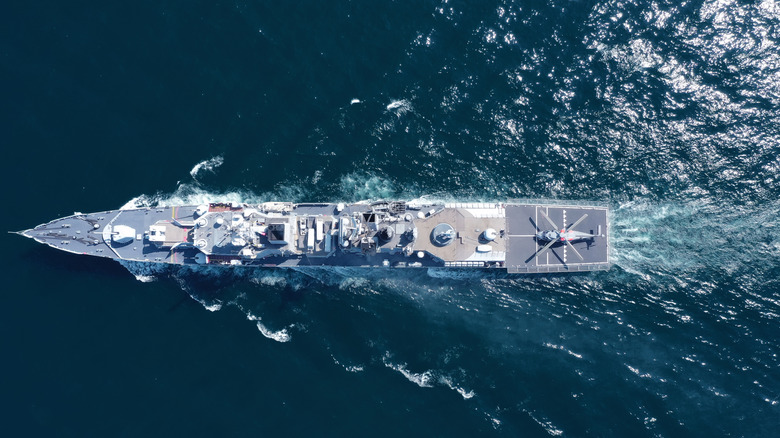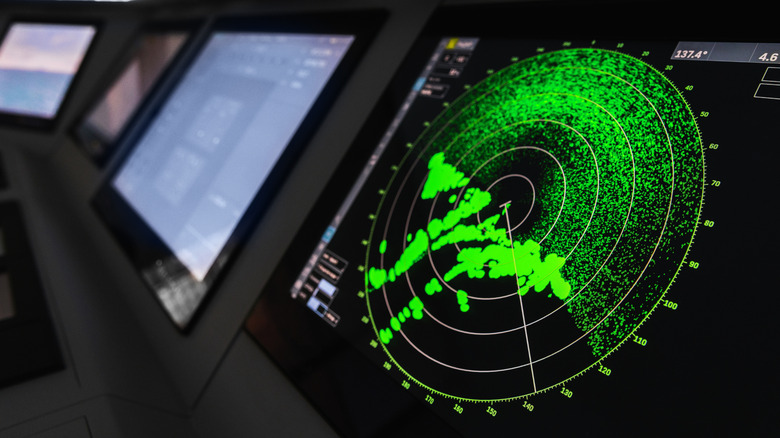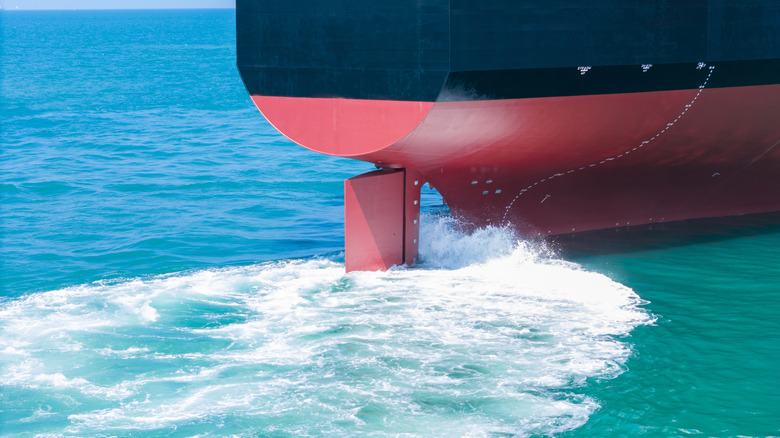What Is The Prairie-Masker Noise Reduction System?
The Prairie-Masker system is a two-part underwater noise reduction system used by U.S. Navy surface ships and submarines. It's designed to make vessels harder to detect by passive sonar, which listens for noise rather than sending out pings like active sonar. Prairie and Masker are separate systems but work in tandem. The Prairie system pushes compressed air through tiny holes in the edges of propeller blades, creating a curtain of bubbles.
These bubbles reduce the cavitation noise caused by spinning propellers, which is one of the loudest sounds a ship produces underwater. Masker, on the other hand, releases air from belts placed along the hull, forming a shield of air bubbles around the ship. This is especially helpful in masking machinery noise around the engine room before it reverberates through the water.
In simple terms, Prairie silences the propellers, Masker silences the engines. Together, they lower the ship's acoustic signature and make it harder for even the most advanced submarines or sonar buoys to track them. This tech remains in use today because, despite all the advances in stealth coatings and hull design, bubbles still work. It's not perfect, but it makes a huge difference in sonar evasion, and in naval warfare, staying undetected can mean staying alive.
Why the U.S. Navy still relies on it
Even with newer propulsion systems and quieter engines, ships still make noise. Metal-on-metal vibrations, rotating machinery, and even water sloshing in piping systems — it all travels through the hull and echoes through the ocean. Even the smallest of noises can give away a ship's location. For navies that face modern, silent submarines like China's expanding submarine fleet and Russia's stealthier attack subs, reducing that sound is a top priority. And since Prairie-Masker is a proven and effective system, the Navy hasn't moved away from it.
With passive sonar systems, submarines don't have to ping a burst of sound; they just listen for noise signatures, the unique acoustic fingerprints of ships. By interrupting that process and scrambling the signal with a layer of bubbles, like static over a radio, the system buys ships time and distance; time to detect threats first and distance to avoid or respond before being targeted.
Apart from submarines, sonobuoys (traditionally used to detect submarines) dropped from aircraft and even underwater drones use passive sonar , which is having an increasing impact on marine life. Prairie-Masker helps ships avoid triggering those tripwires. Especially when a ship is tracking or tailing a target for intelligence or reconnaissance missions, silence is essential.
Flaws in the system
While effective in reducing acoustic signatures, the system comes with notable drawbacks. One of the main issues is its limited effectiveness across different speeds. It only works within a narrow speed range and becomes ineffective above 15 knots or at very low speeds. At low speeds, the bubbles simply rise vertically instead of forming a shield along the hull, reducing their masking effect. Sea conditions can also interfere with the system's performance, making it unreliable in rough or variable waters.
Additionally, while the system aims to confuse sonar, it can unintentionally draw attention. The air bubbles create a reflective layer that may actually highlight the vessel's presence instead of concealing it. Another disadvantage is the increased wake the system produces. This makes the vessel more visible and vulnerable to wake-homing torpedoes, a mainstay in the arsenal of many of the deadliest attack submarines in history. On top of that, the system requires a constant supply of compressed air, which not only consumes energy but also generates noise itself, adding to the very issue it's attempting to suppress.
Lastly, the bubbles can enter the ship's cooling water intake, reducing the efficiency of its cooling systems. This can pose a serious operational risk in combat or high-stress scenarios. Despite these flaws, the Prairie-Masker systems help ships operate in enemy waters without constantly broadcasting their position. That affects planning, deployments, and the balance of power at sea.


